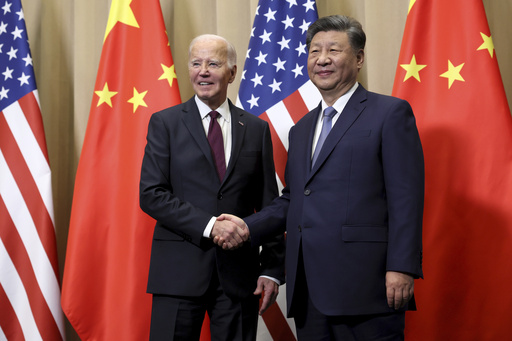
SAO PAULO — On Sunday, Joe Biden will mark a historic moment by becoming the first sitting U.S. president to visit the Amazon rainforest during a short visit to Manaus, Brazil. This visit coincides with expectations that the incoming administration of Donald Trump will diminish U.S. efforts to address climate change.
The Amazon rainforest, comparable in size to Australia, is critical in combating climate change as it absorbs vast amounts of carbon dioxide, a greenhouse gas that contributes to global warming. However, the region is facing severe deforestation.
Biden’s itinerary includes an aerial survey of portions of the largest tropical rainforest in the world, meeting with local and indigenous representatives, and touring an Amazon museum. This visit is intended to emphasize his administration’s commitment to preserving this vital ecosystem.
Last year, the Biden administration unveiled plans to contribute $500 million to the Amazon Fund, an international initiative mainly supported by Norway to protect the rainforest. The U.S. government has so far allocated $50 million to this cause, according to a statement released by the embassy in Brazil, which also mentioned ongoing efforts to work with Congress to secure additional funds for related projects through 2028.
“This is a significant visit for a sitting president. It demonstrates a personal commitment from the president,” commented Suely Araújo, a former leader of Brazil’s environmental protection agency and a public policy coordinator at the Climate Observatory. However, she expressed skepticism about the visit yielding any tangible outcomes, fearing that funding dedicated to the Amazon Fund may not materialize in the coming months.
With the Trump administration’s expected focus away from environmental issues, the prospect of increased support for the Amazon Fund appears grim. Trump has previously suggested prioritizing withdrawing from the Paris Agreement, a global commitment aimed at mitigating the impacts of climate change, which Biden had recommitted to during his presidency. Furthermore, Trump has dismissed climate change as a “hoax” and indicated plans to undo energy efficiency regulations established under Biden’s administration.
The Amazon rainforest is not only the largest of its kind on the planet but also home to numerous Indigenous tribes and around 10% of the Earth’s known biodiversity. Additionally, it plays a crucial role in regulating climatic and moisture levels across South America. Approximately two-thirds of the Amazon is situated within Brazilian territory, and experts have warned that its ongoing degradation could lead to dire consequences for the globe.
The region has endured two consecutive years of record droughts, leading to the drying of rivers, abandonment of fishing communities, and an escalation of wildfires that have consumed areas exceeding the size of Switzerland, causing smoke to blanket cities both nearby and at a distance.
On assuming office last year, Brazilian President Luiz Inácio Lula da Silva indicated a shift in environmental policy from his predecessor, Jair Bolsonaro, who had favored agribusiness at the expense of forest conservation. Bolsonaro’s administration saw deforestation rates reach a 15-year high as environmental agencies were weakened.
Lula has committed to achieving “zero deforestation” by 2030, yet his tenure concludes in 2026. Recent official data revealed a 30.6% decrease in forest loss within the Brazilian Amazon during the year leading up to July, marking the lowest deforestation levels in nine years. Nevertheless, in that time frame, approximately 6,288 square kilometers (2,428 square miles) were lost, an area roughly equivalent to the state of Delaware. Importantly, this assessment does not reflect the increased destruction that occurred this year, which will only be accounted for in future reports.
Despite these positive trends in reducing deforestation, Lula’s administration has faced backlash from environmental advocates due to support for initiatives that threaten the Amazon, such as plans to pave a highway through an ancient forest zone that could promote logging, engage in oil drilling near the Amazon’s mouth, and develop a railway for transporting soy to ports in the region.
Biden’s visit to the Amazon is part of a six-day journey to South America, marking his first trip to the continent as president. The visit follows his attendance at the annual Asia-Pacific Economic Cooperation summit in Lima, Peru, where he also engaged with Chinese President Xi Jinping. After his brief stop in Manaus, Biden is set to proceed to Rio de Janeiro for the upcoming G20 leaders summit.
